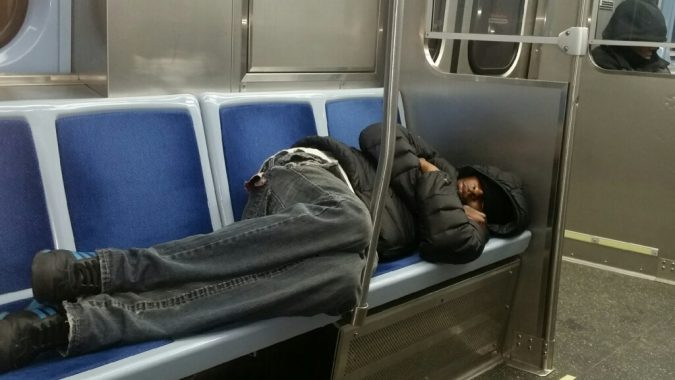Chicago is one of the world’s most beautiful cities, but similar to an unpolished, sparkling amethyst—it has its sharp edges. Our skyline is breathtaking, the city’s shoreline stretches from Indiana to Wisconsin and our world-class transportation system allows newcomers to learn the area with ease.
The Chicago Transit Authority (CTA) is the vein that runs throughout the body of the city—as 10 million commuters rely primarily on the L and bus lines every week.
There have been several changes to CTA from the paper transfer, smaller transit cards to Ventra cards outsourced to the Cubic Transportation Systems. The system has made it more accessible for riders to purchase fares online, onsite at train stations and at authorized retailers. The last CTA budget did not include a fare hike—a surprising relief for millions of commuters who look to save on parking and gas but are met with the pricey fares.
When speaking with commuters, the history of the transit agency’s fare hikes can be irritable at best. However, another issue is pressing right now. Finding a proper seat on the train has become a major concern for riders while homeless people sleep on the trains—at times taking up an entire row of seats.
Commuters Have Mixed Feelings
Aisha Pryor, who resides on the South Side, works daily downtown and rides the Red Line.
“As an adult rider, you become more aware. I do notice, there in the winter time—mostly in the winter time–I encounter a lot of homeless people and sometimes they will lay out and take up three seats,” she said.

CTA spokesperson Brian Steele said, “Every year, we get a spike in the winter months. Obviously, the weather is colder. Typically, those numbers come down during the warmer weather months. Those numbers have been dropping since the temperature is dropping.”
And while the temperatures rise and the number of homeless riders decrease, there is still some concern from commuters. It’s what may be left behind.
Since the late 1990’s, the CTA changed over from the hard-plastic bucket-style seats to the micro-fabric covers on the buses and gradually transitioned the look to its train cars. The dark blue color gave the interior a fresh look that resembled other major cities’ transportation system. But, it has caused more grief than comfort for CTA riders—concerned about cleanliness when at times seats can be wet from either rainy weather from a cracked window or urine stains—it makes for an unpleasant and unsanitary commute.
Pryor says, “When it rains, I’m conscious of it. I’ll take my hand to see if the fabric is wet, but then I don’t want to because everyone has been sitting there. It’s either you’re going to sit or you’re going to stand. I ride all the way to the end of the line. I’m getting off of work and I’m tired.”
CTA admits to receiving mixed feedback from half of its riders regarding the fabric cover seats with a 50/50 positive acceptance while others preferred the hard plastic that made liquid and other foreign substances visible.
“We’ve begun to replace the fabric seat inserts with hard plastic inserts. Part of the reason that we went to the fabric seating—they are more graffiti resistant and also vandalism resistant. They don’t show marker. The fabric is also treated with an anti-microbial treatment to help address bacterial material. This is special fabric made for transit usage. We are in the process of changing out the fabric processed seats to hard plastic.”
With 1,800 active CTA buses and 1,200 train railcars in service—Steele said this process will take some time and couldn’t offer the order of which transit lines would be affected with the new cosmetic changes.

Meanwhile, commuters such as Kevin Arnold are concerned about the present situation of Chicago’s homeless finding refuge on the railcars. Growing up in the city, this has become a way of riding public transportation.
“It has pretty much been the same for years. Late nights and early mornings, you see people sleeping with all of their things on the train.”
Homelessness Is Much Bigger Problem
Although the weather is warming up and there will be less homeless individuals riding the lines—the problem still exists and more families are impacted by unemployment.
As the Minority Veterans Program Coordinator (MVPC) Floretta Strong-Pulley works in the Retired Veterans Administration office says says she sees firsthand the major impact of being homeless among vets.
“For many people, they’re a month’s paycheck from being homeless, now it’s less than half of a paycheck. You live half a paycheck, you are homeless. Veterans are losing jobs like everyone else. Anything you could think of—a veteran is also dealing with the same thing,” she said.
Pulley says since the Reagan administration, Title 38, which cared for veterans without restrictions—has now given the federal government the authority to deny many vets access to resources and care at their discretion. Her job is to help veterans with the necessary access to prevent mounting circumstances that force many to seek shelter on the CTA railcars.
Every day, Pulley handles cases that are very similar but can have detrimental results.
She explains a typical situation. “You have a VA veteran with a mental health condition. He doesn’t have a substance abuse problem but he’s just not feeling well. He lost his job…He’s jobless and doesn’t have the money to pay his rent—he loses his place and now he’s looking at shelters. Some of these places are dangerous, which leads many to alternate areas.”
The CTA partners with the City of Chicago’s Department of Family and Support Services (DFSS). The DFSS’ purpose is to promote the independence and welfare of individuals, support families and strengthen neighborhoods—according to the City of Chicago’s website. Under the department, the Homeless Services Division falls under the responsibility of DFSS to implement a 10-year plan to eliminate homelessness in Chicago. The department’s services include providing housing, prevention and other support services.
The Chicago Defender reached out to the DFSS for more thorough insight on the relationship with CTA and did not receive a returned call.
Steele, of the CTA, said, “We work with them [DFSS] on a program under which we handle outreach to homeless individuals who are riding the system. Once or twice a week, we go to various locations to engage with homeless individuals to get them to take advantage of the support services that are available throughout the city.”
The problem is much deeper than a temporary fix–with the state’s budget still at a major standstill. The growing number of human service agencies are working at constrained and limited resources.
Last year the CTA began “quality of life” missions on the rail system. Routine sweeps are conducted from 11pm-7am, a couple of nights a week. “We have a canine team and they go out, ride the trains and look for cases if people are sleeping on the train, taking up more than one seat or laying on the floor—they’re able to address this during the trip.”
Cleanliness and Public Health
Steele points out when the train gets to the end of the line, according to the CTA “Rules of Conduct” policy, all riders have to get off the train, then exit the station. “In order to get back on the train, they have to pay another fare. That’s applied to all of our customers.”
Aisha Pryor disagrees—she says this is not always the case.
“When I’m getting on, some of the CTA cleaning crew that get on will wake up the homeless people. One reason is the train may go into the yard so they have to get off. Sometimes, they’ll just wake them up to let them know they are at the end of the line. They know they’re not getting off, but they’ll wake them up. Some CTA cleaners don’t wake them up at all,” Pryor said.
But Steele is adamant the CTA is diligent about its policy being carried out by its employees.
“We do cleaning of railcars at the start of every service day—cars are cleaned and they go along their given route. They clean before they go on their next run. Crews will pick up any visible debris. If they see any kind of foreign substance or anything that need cleaning—they will pull that car in the yard so that they can mop the floors or wipe down the hard surface.”

An incident on the Red Line that caught everyone’s attention was reported in February when CTA rider Michael Moore filmed a homeless woman on board with a bag that held “hundreds and hundreds” of bugs. Moore filmed the bugs that visibly crawled inside her bag. When Moore alerted the conductor, the transit system took the train car out of service to clean and disinfect the area, but he said he witnessed the woman boarding again.
Reports of bed bugs have become a re-occurring concern as commuters document their own concerns via social media.
As a daily rider, Pryor understands the fast turnaround and has witnessed the cleaning crews. “It’s not just about cleaning up around homeless people. Whatever they see on the floor, they sweep it. If they see paper, they may pick it up. Unfortunately, sometimes they don’t get to my car because the train sometimes leaves back out. It’s a really quick turnaround.”
As the cultural make-up changes past 35th Street on the Red Line while the train cars transport predominately Black commuters to its final destination at 95th Street, Kevin Arnold says, “It gets rougher on the Red and Green line when you hit Roosevelt Road heading southbound. People start selling weed and cigarettes.”
Regardless, both Pryor and Arnold feel the CTA has improved in areas when it comes to faster arrival times and less delays. The surveillance system is one of the best in the country to catch criminals in the act, which has instilled more commuter confidence in public safety.
“We work very closely with the Chicago Police Department (CPD). We have one of the largest security camera networks than any transit agency in the country,” said Steele. “We have 23,000 cameras on our trains, buses and stations so that helps the service. If a crime does occur, we’re able in many cases to pull the video and work with the CPD to identify a suspect and make an arrest. We have a really strong track record in that regard.”
In addition, Steele adds, “I think it’s important for customers to know that we’re being both proactive and responsive as it relates to this issue.” The Threshold program is a partnership the agency has with the city. He says, “We are able to reach out to the homeless on an individual basis to let them know shelter, mental and health service is available. That’s been a strong partnership.”
The program’s officials hope that more homeless individuals get the services offered, but many will not due to mental health illness and oftentimes— pride.
Floretta Strong-Pulley gives many of her vet clients a bit of advice. “Don’t let your pride defeat your purpose. Sometimes our vets are good for that. Which I understand—I tell them that they fought for their country so they have to fight for their benefits.”
For assistance in finding resources on housing, healthcare and other care, contact City of Chicago’s Department of Family and Support Services located at 1615 W. Chicago Ave. (312) 743-0300.
For Veteran Services and Assistance, Chicago Office of Veteran Affairs or U.S. Department of Veterans Affairs which lists local office locations throughout the city and state.




